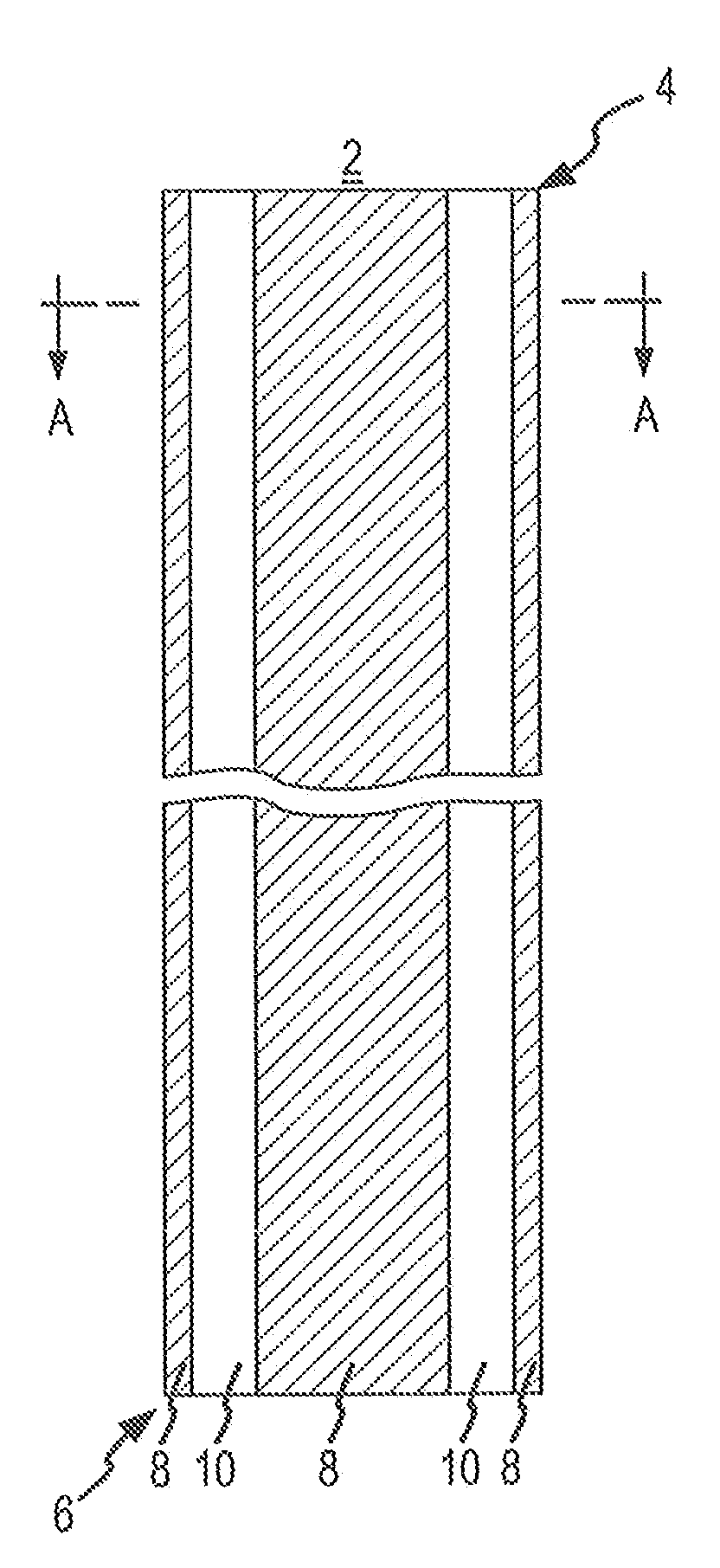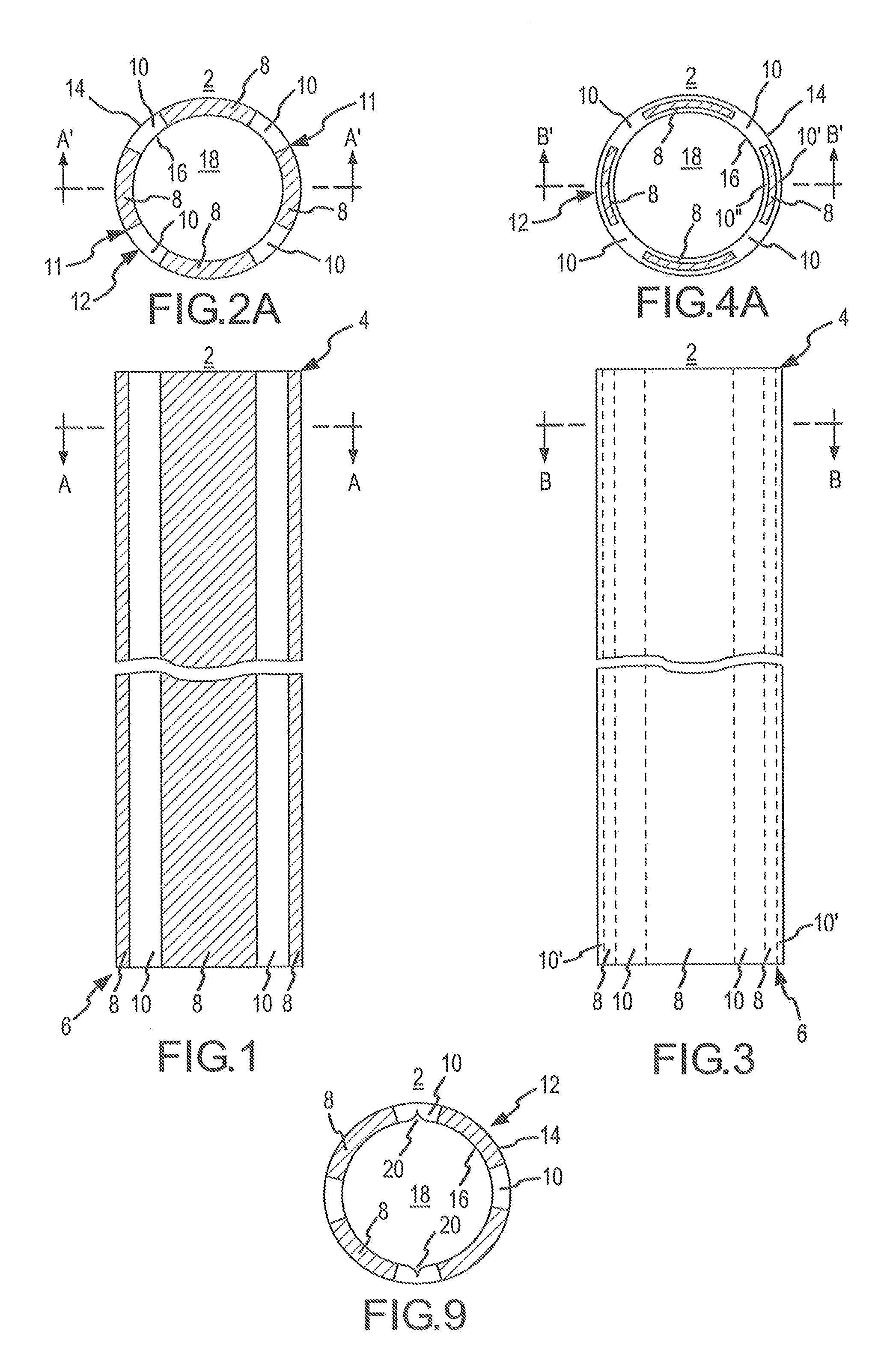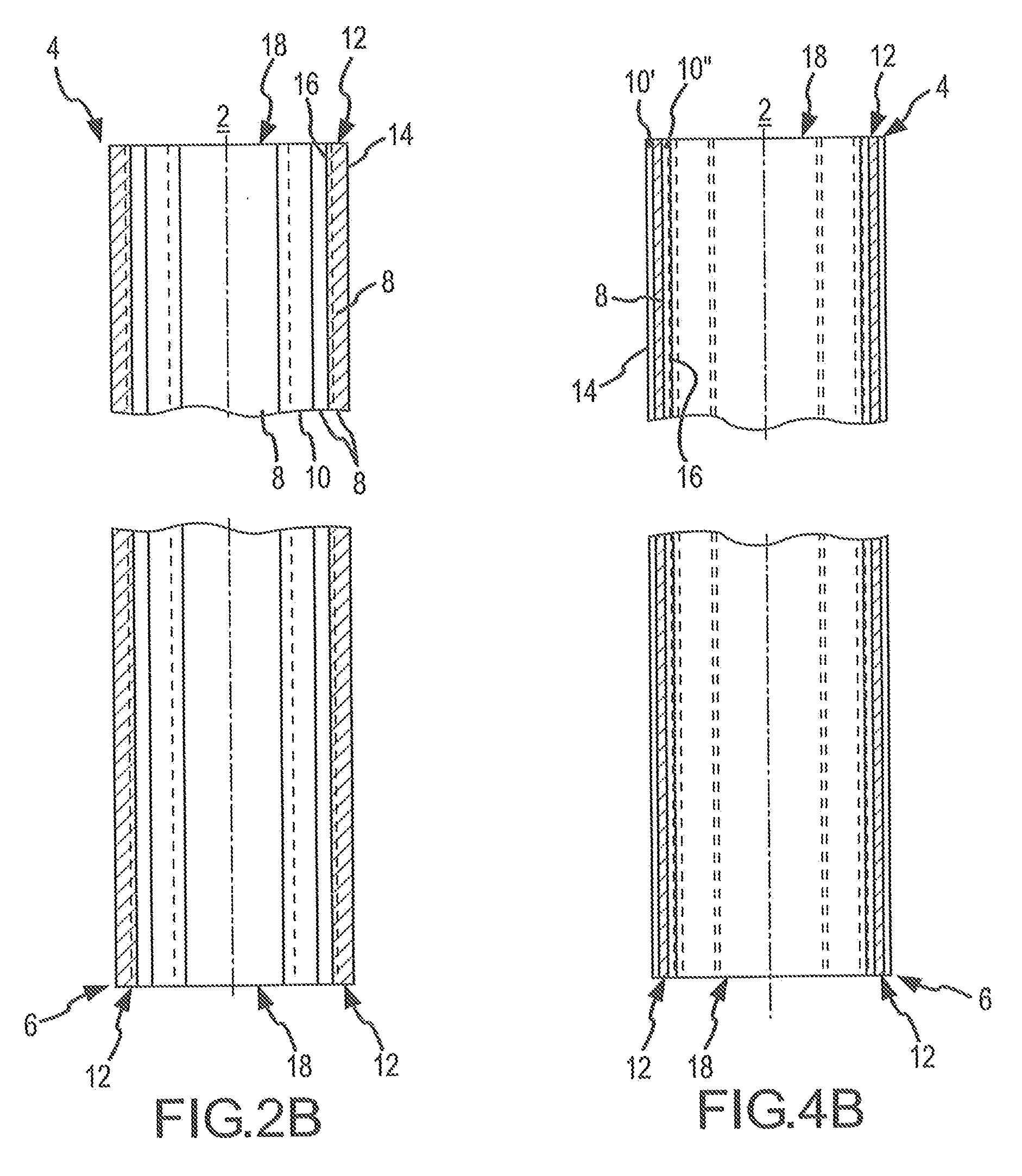Peelable Atraumatic Tip and Body For a Catheter or Sheath
a technology of atraumatic tip and a body, which is applied in the direction of catheters, intravenous devices, guide needles, etc., can solve the problems of separating material, difficult and expensive manufacturing process, and difficulty in providing peeling grooves, and achieve the effect of improving melt adhesion
- Summary
- Abstract
- Description
- Claims
- Application Information
AI Technical Summary
Benefits of technology
Problems solved by technology
Method used
Image
Examples
first embodiment
[0048]FIG. 1 is a side elevational view of the present invention including a splittable (i.e., peel-away type) tubular body 2 for a catheter or sheath. The tubular body 2 includes a distal end 4 and a proximal end 6. In the embodiment shown in FIG. 1, the tubular body 2 is formed of at least two integral longitudinal strips 8, 10 of different materials, (e.g., a first polymer and a second polymer). As indicated in FIG. 1, each strip 8, 10 may extend the full length of the tubular body 2 in a generally straight manner.
[0049]The strips 8, 10 will be referred to herein as the first strip 8 and the second strip 10. The material of the first strip 8 will be sufficiently different from the material of the second strip 10 so as to form a stress concentration along the interfacial zones (i.e., borders) 11 between the two strips 8, 10. The stress concentration forms a peel line 11 that acts like a built-in peel groove. As a result, the tubular body 2 may be readily splittable although it la...
second embodiment
[0070]Similarly, in a second variation of the tubular body 2, as depicted in FIGS. 4E and 4F, which are, respectively, a latitudinal cross-sectional view of the tubular body 2 taken through section line B-B in FIG. 3 and a longitudinal cross-sectional view of the tubular body 2 taken through section line B″′-B″′ in FIG. 4E, the first strips 8 are subjacent to a single layer of second strip material 10, which is an inner layer 10″. Thus, as depicted in FIGS. 4E and 4F, the second strip inner layer 10″ forms the inner circumferential surfaces 16 of the tubular body wall 12 and the first strips 8 form segments of the outer circumferential surface 14 of the tubular body wall 12.
[0071]For a discussion of a third embodiment of the invention, reference is now made to FIGS. 5, 6A and 6B. FIG. 5 is a side elevation view of a third embodiment of the tubular body 2 having a distal end 4 and a proximal end 6 and being formed of at least two integral longitudinal helical strips 8, 10. These stri...
fourth embodiment
[0076]Similarly, in a second variation of the tubular body 2, as depicted in FIGS. 8E and 8F, which are, respectively, a latitudinal cross-sectional view of the tubular body 2 taken through section line D-D in FIG. 7 and a longitudinal cross-sectional view of the tubular body 2 taken through section line D″′-D″′ in FIG. 8E, the first strips 8 are subjacent to a single layer of second strip material 10, which is an outer layer 10′. Thus, as depicted in FIGS. 8E and 8F, the second strip outer layer 10′ forms the outer circumferential surface 14 of the tubular body wall 12 and the first strips 8 form segments of the inner circumferential surface 16 of the tubular body wall 12.
[0077]The first strips 8 and the second strips 10 can be formed from two compatible polymers or polymeric compounds into an integral tubular body 2 via co-extrusion, co-injection molding, or co-compression molding processes. Candidate polymeric materials include thermoplastic and thermosetting polymer systems.
[007...
PUM
| Property | Measurement | Unit |
|---|---|---|
| stress concentration | aaaaa | aaaaa |
| stress concentration | aaaaa | aaaaa |
| stress concentrations | aaaaa | aaaaa |
Abstract
Description
Claims
Application Information
 Login to View More
Login to View More - R&D
- Intellectual Property
- Life Sciences
- Materials
- Tech Scout
- Unparalleled Data Quality
- Higher Quality Content
- 60% Fewer Hallucinations
Browse by: Latest US Patents, China's latest patents, Technical Efficacy Thesaurus, Application Domain, Technology Topic, Popular Technical Reports.
© 2025 PatSnap. All rights reserved.Legal|Privacy policy|Modern Slavery Act Transparency Statement|Sitemap|About US| Contact US: help@patsnap.com



